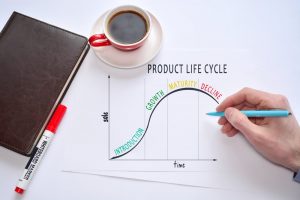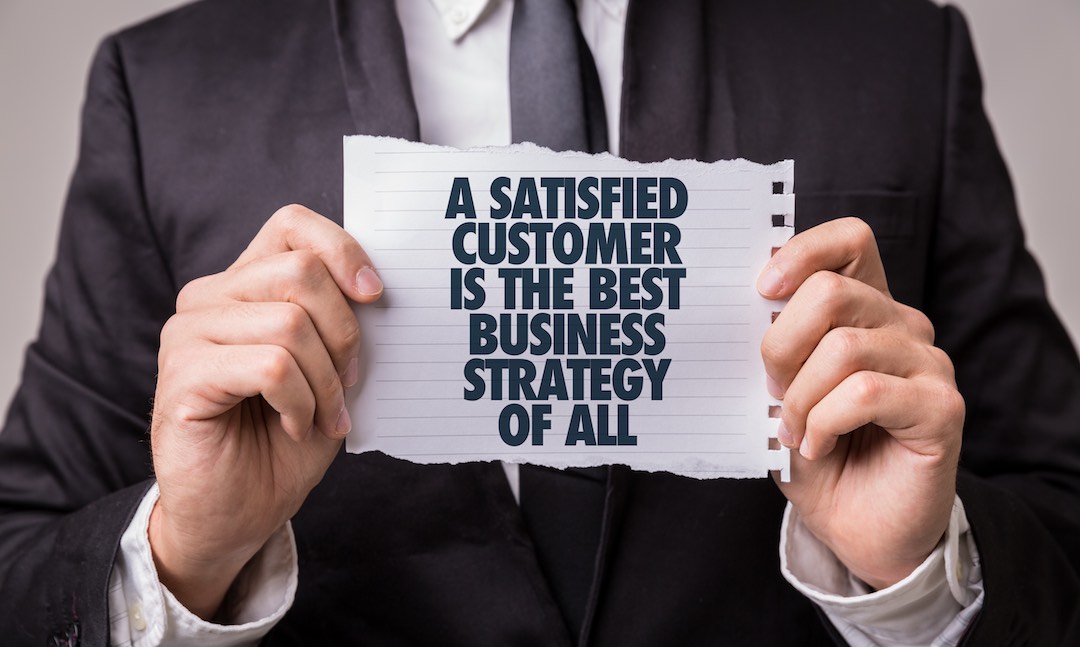 Most brands aren’t killed by the competition so much as they die from self-inflicted wounds. This is especially true with branded products in the consumer packaged goods space.
Most brands aren’t killed by the competition so much as they die from self-inflicted wounds. This is especially true with branded products in the consumer packaged goods space.
During the 20 years we spent building the famous Barefoot Wine brand, it almost died on several occasions because of our own mistakes, miscalculations, and faulty assumptions. During that period, we saw many branded consumer products come and go. Most with great fanfare at birth and a whimpering dirge at their burial. Most of these products died for similar reasons.
Product Life Cycle is More Than a Numbers Game
We find it interesting that academics and observers have developed a widely used term, “product life cycle.” The term tries to define the concept that products are born and die, and in-between pass through several definable stages. Most marketing pundits agree on at least four of those stages: introduction, growth, maturity, and decline. Others like to divide up the process into six stages: development, introduction, growth, maturity, saturation, and decline.
We tend to agree with the six-stage approach because each phase has lessons to be learned for new product producers and brand builders. But we don’t agree that product life cycle is strictly a numbers game. Sure, looking at the life of a product from cradle-to-grave, sales increase, achieve a peak, and decline. But there’s a much larger story behind the numbers that people who have actually built a brand in the national market can attest to.
Creating and marketing products under a brand name for 20 years has taught us these critical product life cycle lessons the hard way. For us, it’s not so much of an academic discussion to create a term for each phase and try to compare and contrast it, as it is understanding the brand building producer’s challenges and responsibilities as the dynamics change throughout the life of the brand, product, and business itself.
Introducing a Brand as a Start-up
Due to the sheer size of the large brand holders and their domination of the marketplace, marketing critics tend to focus on the products they create and the product lifecycle of their sub brands. Those companies are so big that when they create a new product that fails, they remain unphased in the market due to the number of other products and brands they control.
But what about independent folks like us who just have a great idea, identify an unsatisfied demand, or who have an opportunity to introduce a new product into the market? Now it’s not some giant company behind the product who can easily withstand a failure. Now it’s much more personal. A failure will put the small company out of business. We have chosen to address the stages of the product life cycle in a context we feel will be the most valuable to a hands-on new product brand builder.
4 Stages of Business
To understand the product life cycle, you must first appreciate the way the challenges of the distribution channel are affected by the four stages of business itself. Unless you are acquired, as we were, prior to the fourth stage, your business will pass through these four stages:
1. Startup
 You simply don’t know if you’re going to make it. And “making it” means that you have enough capital, and/or are resourceful enough to satisfy your creditors and stay in business long enough to achieve a positive cash flow. For you, as a small producer, independently owned, you don’t have the luxury of an infinitely long runway with a huge burn rate. For you, sales must happen quickly or you go out of business. It’s as simple as that.
You simply don’t know if you’re going to make it. And “making it” means that you have enough capital, and/or are resourceful enough to satisfy your creditors and stay in business long enough to achieve a positive cash flow. For you, as a small producer, independently owned, you don’t have the luxury of an infinitely long runway with a huge burn rate. For you, sales must happen quickly or you go out of business. It’s as simple as that.
2. Build Up
You finally get one or two big retailers to take your product which pay your bills. You’ve identified the demand and proven your concept. But your sense of relief and elation is quickly replaced by the sobering reality that if the big retailer discontinues your products, you’re out of business! Further, you realize that you are over the barrel. The big retailer knows that he can get better prices from you simply by threatening to discontinue your product.
3. Build Out
You are compelled to expand. You look for other big retailers to take your product. And you want to be able to mitigate the damage from being discontinued by one of the Big Boys by having many Big Boys buying your product. But this is the most dangerous stage of any business because this is the stage where your business finds out the true cost of sales. Now that your products are spread throughout a wider territory, you must support those sales with hands-on vigilance, merchandising, and other expensive forms of sales support. Many small producers fail to take these costs into consideration.
4. Enterprise
You’ve sort of made it. Your business is stable. You made it through the first three stages of business growth. And you have now developed an enterprise with increased specialization of labor, efficiencies of scale, and larger supply purchases resulting in the reduction of costs. You can take a hit and still survive. If the product that got you there eventually fails, you are now in a position to introduce and grow new products and even new brands.
Now, with that said, we can examine the six phases of the product life cycle as it applies to independent producers:
6 Phases of the Product Life Cycle
Phase One: Development
Access to the Market
Before you finish designing your product, discover your access to the market. Most marketing critics stress the importance of what they call the “product-market fit.” This simply means that there is a demand for your product. Interestingly, we have found through painful experience that you can have a perfect product-market fit but be unable to access the market. It’s not good enough that you have identified an unaddressed demand. You must discover how to configure and present your product where there is a current need in retail category management.
For instance, in our case, we identified a need for a dependable everyday staple wine product designed for a 37-year-old female supermarket shopper. As time eventually proved, the market was indeed there. However, at the time, more than 95% of the supermarket buyers were male and didn’t necessarily understand this market demand. They had little to no history of success with a product specifically designed for this segment.
But the buyers did have an opening for a red and white varietal pair in big, 1.5-liter bottles at the velocity price point. We then deliberately developed a product to those exact specifications. Buyers told us there was considerably less competition there. It was our only way in at the time.
Packaging, Pricing and More
Of course, there are other considerations besides package and price, such as quality, consistency, marketing, labeling, and so forth. Each of these elements needs to be carefully explored, validated, and delivered in order to sustain your product sales once you gain access. But from our experience, we see tons of great products never make it to the shelf because they were designed independent of market access requirements.
Obviously, all this research and development has to be financed during the startup phase. Many businesses fail because they burn up their capital in the lab or on the drawing board.
Phase Two: Introduction
Vigilance in the Big Chain
The introduction stage is critical to the reputation of the product. It is here that the market will judge you. It is here that your competition will try to crush you. And it is here that you will learn the lessons necessary to stay in the market. The retail market is unforgiving. If you introduce a new product and it is discontinued, it will almost never be given a second chance. If you’re not ready to support your sales, it’s better not to be in a big chain, because you can’t get discontinued from the big chain until you’re in the big chain.
This is why we advise our clients to start small and learn their lessons in a controlled place where the damage they do will be less likely to be noticed and where it can be fixed quickly. We like to say, “Starting out, don’t sell further away from your house than you can drive and apologize in one day.”
Once you are discontinued from a big chain, your competition will be quick to run ahead and warn the other buyers that your product is a “slow mover” or a “nonstarter.” There is only a limited amount of shelf space. All the producers know this. Their goal is to stop your product from taking up precious shelf space that might go to their products. They know the easiest time to do this is when your product is new. Nip it in the bud!
Merchandising, Marketing Campaign and Budget
Introducing a new CPG product requires tons of vigilance, hours of merchandising, and absolutely no out-of-stock situations. You don’t want your customers to get all excited about your new product, go back to the store only to find out it’s out of stock. They will blame you and say your product is “undependable!”
Of course, introducing any new product requires a thoughtful and well-managed marketing campaign, full of accolades and third-party endorsements. It also requires eye-catching and compelling in-store signage. Introductory displays and special pricing are essential to get attention. But all this is for naught without hands-on merchandising, excellent distribution management, and constant vigilance.
The introductory phase must also be financed as part of the startup stage of your company. Unforeseen costs will certainly eat up whatever meager profits you may realize for the first several months.
Phase Three: Growth
Distribution is Key
The product growth phase corresponds to the buildup and buildout phases of your business. With CPG products, growth is a function of distribution. Without distribution, there can be no growth. So developing a distribution network is critical to this phase.
Ideally, you have finally established a positive cash flow. But as mentioned earlier, you must free yourself from being held hostage by a few big buyers. To do this, you must find more big buyers with multiple outlets. Your product and brand awareness in the CPG space is only as good as its availability in physical stores. All the online, social networking, and national advertising in the world won’t be effective if the product isn’t readily available to your customer.
CPG Growth Happens at Retail Bricks-and-Mortar Stores.
Some producers believe they will grow through direct to consumer sales. But they soon find out that e-commerce is a race to the bottom price-wise which ties their hands in the marketplace. Retailers and distributors won’t handle your products if they see them for one cent less online than they can sell for at full retail markup and make a profit. So for this and other reasons, serious CPG growth happens at retail bricks-and-mortar stores.
For the most part, you are dependent on a network of distributors, jobbers, or brokers to deliver your products on a just-in-time basis to retailers who want to keep minimum inventories. This means that you must have representatives on your payroll to oversee and support this process. This gets expensive!
In fact, it is the growth phase that kills many products simply because their producers didn’t budget for the type of support expanded regional and national sales demand. Most new producers grossly underestimate the cost of sales. Not the cost of goods, but the cost of sales– what it actually costs to keep your products on the shelves in thousands of retail outlets.
The big brand holders know what it costs and have developed the manpower to keep their shelf space. This is the key reason why they are much better at scaling than individual independent entrepreneurial producers.
Phase Four: Maturity
Pros of Building a Brand to Maturity
If you have successfully navigated the growth phase, been able to ward off your competitors’ attempts at killing your brand, achieved major distribution, and figured out how to maintain it, your branded product reaches a phase of maturity. That makes it a must-have for the retailers. Their customers know about your product and can buy it from their competition. Now they have to carry it.
This is the big advantage of building a brand around your product rather than succumbing to the temptation to just provide your product as an unbranded or store-branded commodity. (Retailers are known to offer producers access to their customers, but only if their product has the retailer’s store name on it. That way, you become a commodity supplier rather than a brand builder. That way, retailers can threaten you with other producers who will gladly supply their in-house store brand for a few cents less.)
But once you have proven yourself in the marketplace as a branded product, the brand is independent of their stores. If you’ve done your job, your customers will shop for your brand wherever it is carried. The retailers know this and would rather carry your brand than lose the sale to their competitor.
Another advantage of the maturity phase is that you can become an acquisition target. The larger producers realize that it’s cheaper to acquire your brand than to start from scratch to get it to the level of distribution that you’ve already achieved.
There are many other advantages to achieving this level of stability. Probably the greatest is your ability to make quantity supply purchases. This reduces your costs and allows your products to be more competitively priced in the marketplace.
Cons of Building a Brand to Maturity
Product maturity is equivalent to the enterprise stage of business development. Now you know what you’re doing, you have developed a war chest for unforeseen expenses. And you are benefiting from the division of labor and efficiencies of scale. But the very divisions of labor that gave you efficiencies of scale are now beginning to slow you down. Information doesn’t move as fast. Turf wars begin. There’s a loss of urgency. And your people are beginning to become isolated and insulated from the sales process.
Your company can’t react as quickly to market changes. And there’s a bigger chance that your products will lose relevancy because sales and customer service, the only two divisions that speak to your customers on a daily basis, are moved to the bottom of the organizational pyramid. Now, marketing is telling your salespeople how to sell your products and is less likely to respond to the sales peoples’ real world experience. Your company is starting to get sluggish.
Phase Five: Saturation
Eventually, you saturate the market. Your product is everywhere. It’s an institution! Because of the cost of sales, it’s difficult for independent entrepreneurial producers to take their products to this point. That’s why most of the products for sale at retail that have become ubiquitous are owned by the larger companies. They have the manpower, distribution, and retail access to achieve major market penetration.
But even for the big producers, this phase has some major challenges. The pressure is on within their ranks to expand product ranges as soon as their brands are clearly successful. The production and marketing departments of these large organizations tend to want to increase sales by expanding the line. But ultimately the retailers rebel and ask, “Which one of your products would you like me to discontinue to make room for your new one?” This is the “cannibalization effect” that finally puts the brakes on product line extension.
But wait, there’s more. The tendency of the large company is to begin to produce and promote products that are far from the core products initially introduced and that grew the branded product line. Often these new products will be wildly popular for the first few years with volume tapering off rapidly. But by now they’ve cannibalized their core products.
With saturation, the thrill of building a branded product is gone. The periodic celebrations of achieving yet another new chain in another new territory are gone. Now, it’s maintenance mode. The big producers’ people begin to take sales for granted. They are less likely to notice when their products lose relevancy and thereby open up the window of opportunity for “the new kid in town” who defines the market differently.
Phase Six: Decline
The most obvious examples of decline we have witnessed in our 20 years of actual market experience are when branded products are acquired by big organizations that either mismanaged them or failed to appreciate the amount of in-store work necessary to keep them on the shelf.
Often the big producer will acquire the fast-growing branded product in hopes of expanding its distribution and importance to the retailers. Now they own the product the retailers and the distributors are already handling. But if they stop there, the branded product begins to decline. The big companies simply don’t put the attention into the product they acquired that the original producer did.
Another factor that accelerates product decline is when the marketing department of the big producer decides to rebrand the product. This can confuse the marketplace and ultimately lose sales. Marketing folks tend to move around between the large companies. As paid professionals, they look for opportunities to improve their resume for their next employer. An acquisition is an easy target to make their mark. The effects of their actions may not show up for years and by then, they’re working for a new company!
The most common reason we see for decline is a violation of the product’s brand promise. This happens typically because the current company that has the rights to the product’s brand fails to appreciate several brand realities. One is that the customer “owns” the brand not the producer. Another is that the customers’ expectations about the brand and what it stands for is the brand promise, not necessarily what the company’s marketing department has been publishing. Cheapening, standardizing, or behaving in a manner contrary to the product’s brand promise can hasten decline.
Conclusion:
Product life cycle is much more than just statistics. It is really about the product brand stewards’ decisions and their consequences. There are many reasons for product demise. And those reasons can occur at any phase in the life cycle. These include irrelevancy, poor merchandising, poor distribution management, and ambivalence. But from what we’ve seen, products are not murdered by the competition. They usually die of some kind of self-inflicted wound.


